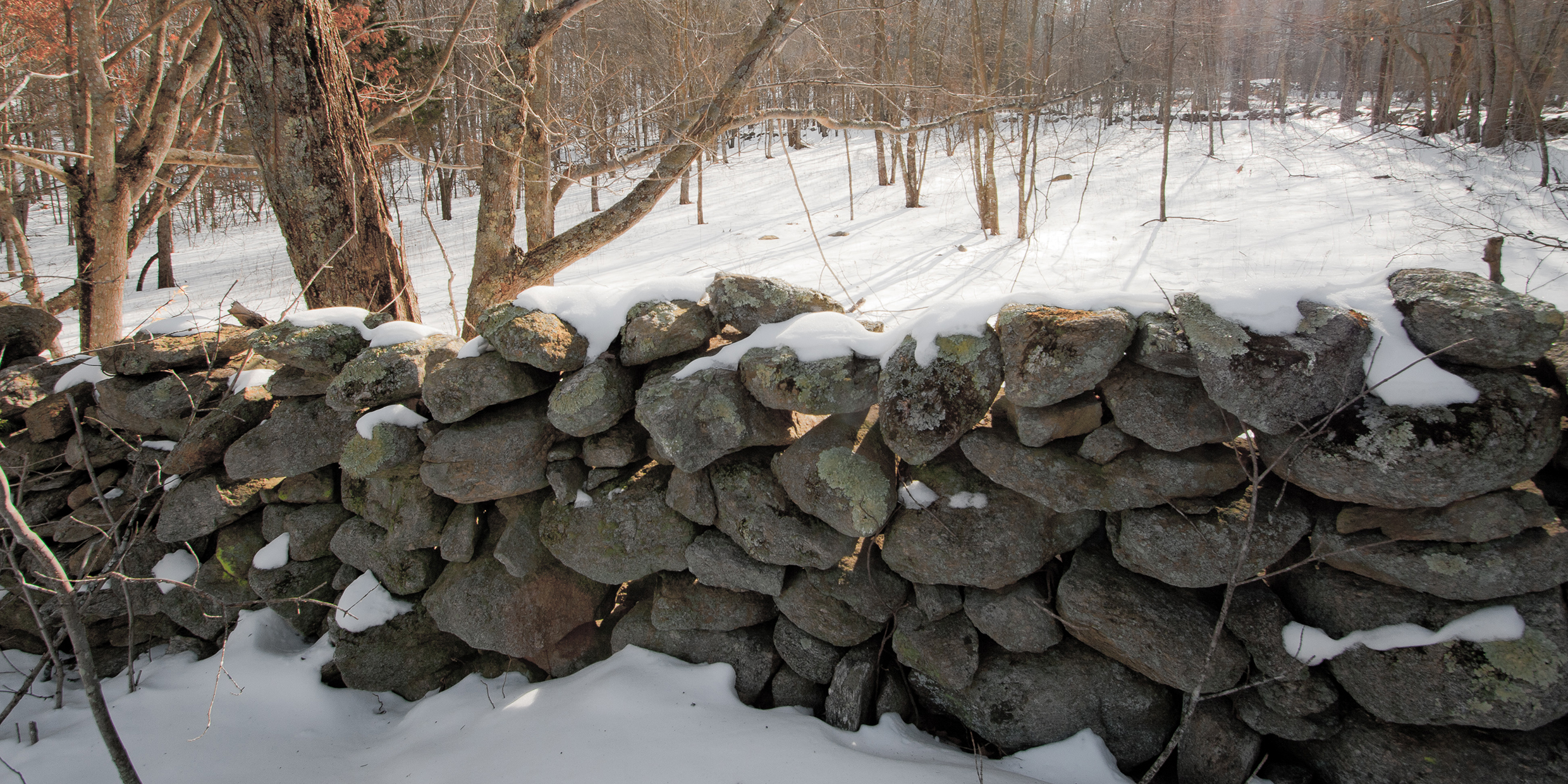Originally published 9 December 1991
December. Green plants have rolled up their awnings and closed shop. Even the mushrooms, November’s ragpickers, hunker down to that invisible life that mushrooms live for 11 months of the year.
Now begins the season when the stones get up and go, heaving themselves into animation, shaking off the stillness of summer hibernation. They burgeon in the garden like cabbages, shouldering frozen earth. From their bunkers under the driveway they push up through asphalt blisters. In the meadows they bud from the ground and creep down hills like carapaced horseshoe crabs, unhurried and deliberate.
There’s a reason for this wintry mobility of stones. It’s called frost heaving, caused by cycles of alternate freezing and thawing. The soil surrounding a buried stone freezes and expands, lifting the stone and creating a cavity underneath. Pebbles or grit sift into the cavity. When the ground thaws the stone is prevented from settling into its old place. It has been lifted, ever so slightly. Another freeze, another thaw: the cycle is repeated. Millimeter by millimeter the stone makes its way to the surface, finally pushing against manicured lawns, paving stones, asphalt driveways, or any other obstruction that blocks its ponderous resurrection.
Once on the surface, stones make their way downhill. Frost expansion lifts a stone in a direction perpendicular to the slope of the hill. Then, as the soil thaws, gravity pulls the stone straight down. Up forward, straight down. Up forward, straight down. Thus do stones descend to the bottom of sloping meadows, taking their sweet geologic time, creeping on frost fingers.
A new theory
Robert Thorson, a geologist at the University of Connecticut, has a theory about the stone walls of New England. Many of them are waste dumps, he says, for stones heaved up out of the ground by the deep frosts that occurred after the region’s trees were cut down in the 18th and early 19th century. Prior to the great deforestation, soil was insulated from deep freezing by trees, leaves, and snow. With the clearing of the trees, stones were waked from a subterranean sleep that had been undisturbed since the end of the last ice age.
Loose rocks, dumped by melting glaciers and buried just below the surface of the ground, were, with the cutting of the trees, exposed to frost heaving.
As cycles of freezing and thawing brought the stones to the surface, farmers dumped them at the sides of their fields. According to Thorson, many of New England’s storied walls were not built to fence in livestock or mark boundaries, but to dispose of rocks that winter popped out of the ground.
Inspired by an account of Thorson’s ideas, I’ve been out in the woods taking a fresh look at the stone walls of my college campus — and there are plenty of them. The oldest walls, dating from the 18th and 19th centuries do indeed often resemble heaps of stone. What I had previously considered to be tumbled-down walls, ravaged by time, upon closer inspection give every evidence of original chaos.
A well-built wall would have its foundations sunk a foot or two into the ground to avoid the disturbing action of frost. But most of the ancient walls of our wooded campus have no foundations at all. They are piles of jumbled stone, as one might expect if Thorson is right. Some of our walls are mere sprawls of stone six feet wide.
Lifted from ice age graves
Like all such theories, Thorson’s will probably turn out to be only partly right. Still, it has been estimated that there are more than 100,000 miles of stone walls in New England, enough to wrap around the world four times. If only a portion of these are refuse heaps for unwanted stones, that’s still a huge amount of rock heaved up out of the ground. What I especially like about Thorson’s theory is the life it gives to stones, lifted from ice age graves into sunlight, to become the bane of farmers and — piled into walls — the happy habitat of chipmunks and lichens.
Thorson wants to convince us that many of the walls we have long admired as quintessential New England craftsmanship are in fact casual dumps for unwanted rocks. But even if he is totally wrong about the walls, he is certainly right about stones heaving themselves up out of the earth.
The frost season is here, step outside and watch.
In the muddy path by the pond frost crystals growing up out of the ground sometimes lift pebbles an inch or two into the air, where they hang like balloons, defying gravity. At night their bigger cousins bulge skyward like the caps of monstrous mushrooms. Others stones go humping down the meadows, patiently plodding forward on a journey that will take them many human lifetimes. They are in no hurry. It is the season of animated stones. They shoulder forward while the rest of nature has closed down, ice age sleepers on the move.



